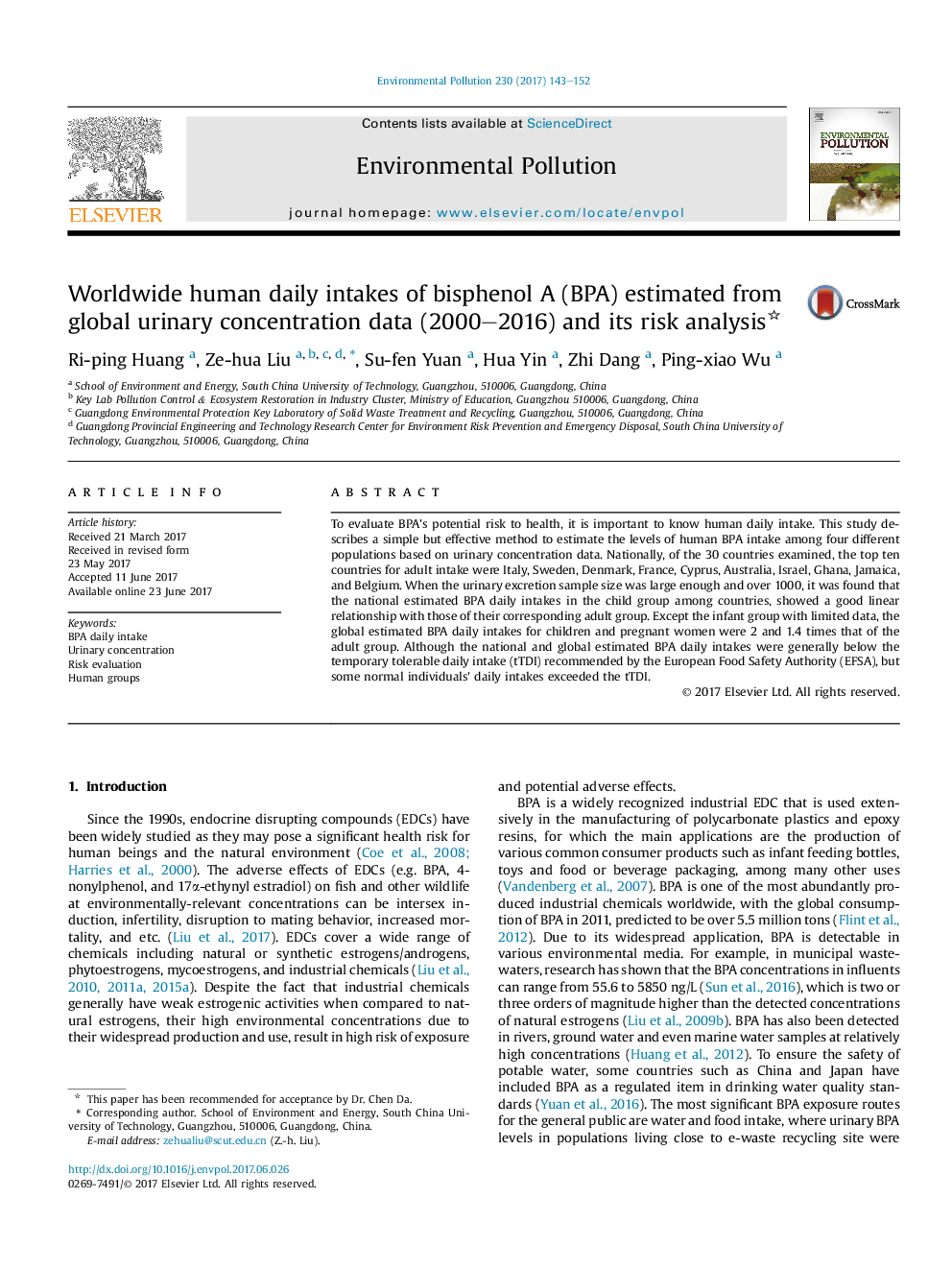| کد مقاله | کد نشریه | سال انتشار | مقاله انگلیسی | نسخه تمام متن |
|---|---|---|---|---|
| 5748661 | 1619143 | 2017 | 10 صفحه PDF | دانلود رایگان |

- A simple but effective method to estimate human BPA daily intake is given.
- Urinary excretion sample size is an important factor for the estimation.
- Global BPA daily intakes among four different populations are presented.
- Global BPA daily intake in adult groups showed linear relationship with that of Children group.
To evaluate BPA's potential risk to health, it is important to know human daily intake. This study describes a simple but effective method to estimate the levels of human BPA intake among four different populations based on urinary concentration data. Nationally, of the 30 countries examined, the top ten countries for adult intake were Italy, Sweden, Denmark, France, Cyprus, Australia, Israel, Ghana, Jamaica, and Belgium. When the urinary excretion sample size was large enough and over 1000, it was found that the national estimated BPA daily intakes in the child group among countries, showed a good linear relationship with those of their corresponding adult group. Except the infant group with limited data, the global estimated BPA daily intakes for children and pregnant women were 2 and 1.4 times that of the adult group. Although the national and global estimated BPA daily intakes were generally below the temporary tolerable daily intake (tTDI) recommended by the European Food Safety Authority (EFSA), but some normal individuals' daily intakes exceeded the tTDI.
365
Journal: Environmental Pollution - Volume 230, November 2017, Pages 143-152